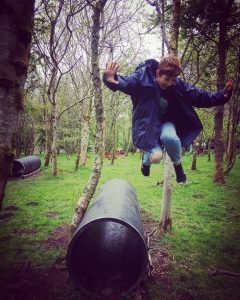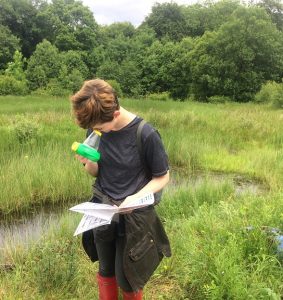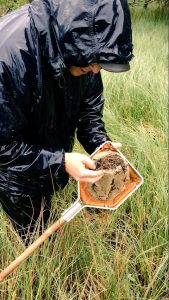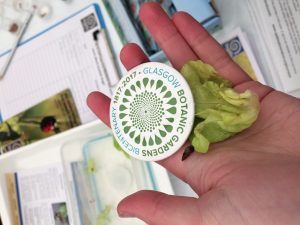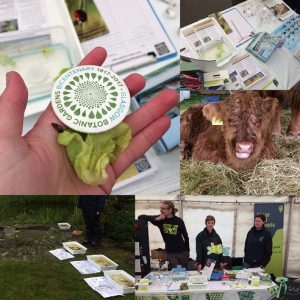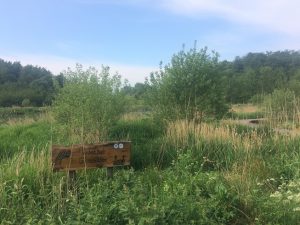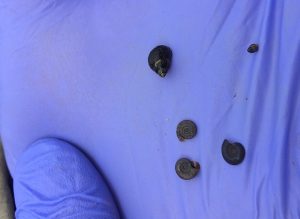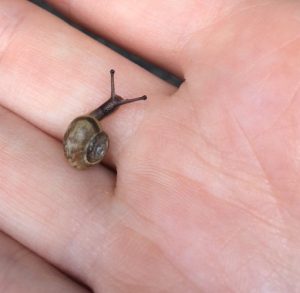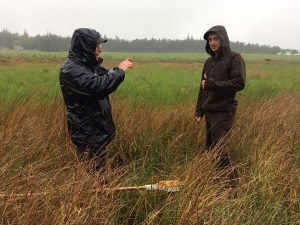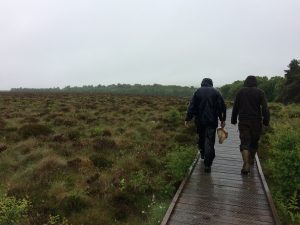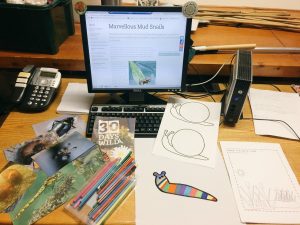
Hello again, and first of all sorry, as things might turn a bit hashtag blessed in a minute…
The last month has been about getting out and meeting people, with a big focus on my personal development in terms of what I’m learning and what skills I can see myself using in the future. Only 2 months into the TCV traineeship and I already feel it’s one of the most valuable things I’ve ever had the privilege of being involved in. Each day is exciting, genuinely in the sense that there’s a world of opportunities for me to access – workshops, talks and lectures, site visits all over the country, knowledgeable people who I can fire off an email to and we can arrange a meeting, I have the freedom to study, research and write about the areas I’m interested in, I’m supporting a truly remarkable project on one of my favourite animals which just happens to be a rare species for Scotland. Plus, through the funding provided, I’m able to purchase any book or conservation resource which will benefit me in the future. Invertebrate handbooks, FSC guides, binoculars, pots, nets, lenses, posters, jackets, clipboards…the list goes on.
When I think back on an average week I’m always shocked at how much I’ve been able to do and take in.
On a Monday I could be out with 65 kids doing a pond dipping and bug session, using the OPAL survey sheets, so packing in some citizen science along the way. My favourite is hearing them draw their own conclusions about the animals we’re finding ‘it’s a stick with legs and I love it’, ‘Miss, that’s horrific’, ‘Miss can we keep the snail, can we name it Sue’. Being able to show them things that turn out to be ‘cool’ which they’d otherwise maybe never have known about – vicious beetle larva attacking a backswimmer went down like it was the best thing they’d ever witnessed.
Tuesday could be a Dragon and Damselfly training session, out in marshes and around pond on our hands and knees recording species and searching for the beautiful newly emerged adults, leaving behind their exuvia on a reed stem, hardening and drying out their shining wings. At a session like this I’ll take notes and write them up later, adding to the species knowledge I’m trying to build on, as well as submitting the species we did find online to iRecord.
Wednesday in the office, reading Mud Snail papers, creating a record of potential release sites, phoning primary schools to get them on board with the captive rearing, creating lesson plans by doing my own research, writing risk assessments for site visits, or maybe even popping out on my lunch break, grabbing a bumblebee guide and doing a bit of biological recording of my own – all the time trying to test my skills and see if I’m learning more each week.
Thursday, a site visit to one of locations in Scotland where the Pond Mud Snail is found, in one instance on the wettest day of the year. Head to toe in waterproofs, through ponds and ditches, over gates and under fences. Physically getting to see the animals in their natural habitat is amazing, knowing that at the end of the project at least 20 more sites will have been created out in open spaces like the one I’m standing in, and that the population will hopefully have increased to a healthy size.
Friday, I’m maybe out with a Buglife colleague who’s leading a workshop or session. All the time I’m figuring out if I was in that situation what would I be doing, how to deliver conservation messages and species information to different groups of people, then we’d be out and about at a local greenspace talking about pollinators, about beetles, or hoverflies and learning to engage with the outdoors just that bit more by understanding what we’re finding. In the afternoon I could have time to plan what training courses I want to go on, booking on, sorting my travel and possibly find the time to write up this blog!
Life in a Shell // Snail Diary //
To tell you the truth the last few weeks have been so busy that I’ve not been able to keep track of the reproduction, which is pretty much through the roof. Conclusions to be drawn: Pond mud snails reproduce exceptionally well in captivity, and aren’t afraid to do so, I’m sure I’ll find out why.
HIGHLIGHTS OF THE MONTH
200 years and a lot of rain:
The Glasgow Botanic Gardens had a Bicentenary celebration event and I went along with TCV to run activities and show off the mud snails. We had a great turn out considering the gallons of rain. Pond dipping with tadpoles, water beetles, Ramshorn snails, backswimmers, cased caddisfly larva, damselfly nymph, and flatworm all to be found. A healthy pond! Behind the stall I think we managed to talk to, or engage with about 300 people at the event. There was a lot of interest in the captive rearing starting after summer with the Pond Mud Snails, which is definitely something I’m working on in the next few months. To host or to help out creating new habitat, digging ponds or if you want to attend a talk, event or workshop to improve your identification skills or bug knowledge you can email me or keep an eye on Twitter.
Dumbreck Marsh, Wildlife Explorers
The second community event for the Mud Snail project and this time it was the first in the local council areas where the wee beasts are actually found. The site in Kilsyth, North Lanarkshire isn’t too far from Dumbreck Marsh Nature Reserve and I joined at the Ranger led Wildlife Explorer Day to chat to the public about the mud snails and run some pond dipping sessions. Although not overly busy, it was a great chance to explore a new area, and even get myself on camera. I made a short film about the things we were finding as I pulled them out the pond, trying to make wee water creatures exciting and chatting a bit about the Mud Snails found in the area. I went for a wander up steam in a shallow burn on site and found what looked remarkably similar to the Pond Mud Snail, after taking the specimen home and having some microscope time it turned out to be the New Zealand Mud Snail (Potamopyrgus antipodarum) or Jenkin’s Spire Snail. So although not turning out to be what I thought was a new site to add to the project, it did get me using ID guides and doing a bit of detective work.
Snail Training Day
Following on from my discovery, it was time to really get into the technical snail stuff with a fantastic training day with mollusc expert Adrian Sumner. We headed out to Edinburgh’s Duddingston Loch in Holyrood Park, a beautiful setting with lots on offer in the water. Despite squaring up to a family of swans it was a successful day overall. I have definitely increased my freshwater ID skills, and feel lucky that I had the opportunity, so easily arranged to have a one to one session with someone like Adrian who is frighteningly knowledgeable. It makes me want to read and study even more to have an in-depth understanding of the freshwater life that is out there. Plus, snails have always been my soft spot, most people see slime with a shell but I’m very fond of them so spending a whole day looking, recording and getting to notice their subtle differences was fantastic.
Some amazing news came with one of the historic sites for Omphiscola glabra which we had been keeping an eye on proving to still hold a population of mud snails. This was a great discovery for the East and Lothian areas and strengthens our work with partners RZSS on the project. This was the first time a site visit had been successful for me, so the first time I’ve witnessed Pond Mud Snails in their natural habitat. It was a very unassuming location, and the rain never stopped all day. Immediately just about soaked to the skin, and armed with our pond nets we ventured out off the boardwalk path across fields and fences til finally reaching the marshy area where the snails were to be found. Clive Walton who made the discovery was kind enough to let me be the first to have a dig around and pull the first out of the pond, it was a brilliant feeling and I’m keen to visit all the sites in the next few months. It really felt like accessing a secret, one that many people don’t know (or at this stage I’m assuming particular care) about, yet for me it was special, and over the project I know we’ll pull even more people on board.
Pin the Shell on the Snail
So this month I’ve had technical training, practical site surveys skills put into practice, community engagement and lots of opportunities to meet and speak to like-minded people. The only thing that was missing was the school element of my project which I have been busy preparing for. Education packs will form a central part of the Mud Snail project and the lucky primary schools that’ll be captive rearing will be provided with information, games, activity sheets, and of course all the equipment they need. I was hard at work, bringing out my creative side to come up with a few classroom activities. Essentially I want to create a whole project package that could be given to the teachers to form lesson plans for the year around the Mud Snail project, which also touches on vitally important areas in animal biology, food webs, conservation and life cycles. At the heart of it all I think it’s important for the children (and teachers/adult helpers who some of the time can shrink back at the mention of bugs) to stop and appreciate it why it is that we should care for the environment and the animals within, even if they are ‘just a brown snail’.
Until next time…
-Kirsty
Be sure to follow what I’m up to on Twitter, and check out TCV Natural Talent for an update on my fellow trainees.
Thanks to the Esmée Fairbarin Foundation for funding this brilliant programme. Find out more about them here
Also to Buglife Scotland for hosting my placement. Keep up with all the amazing work they are doing and support the small things!

